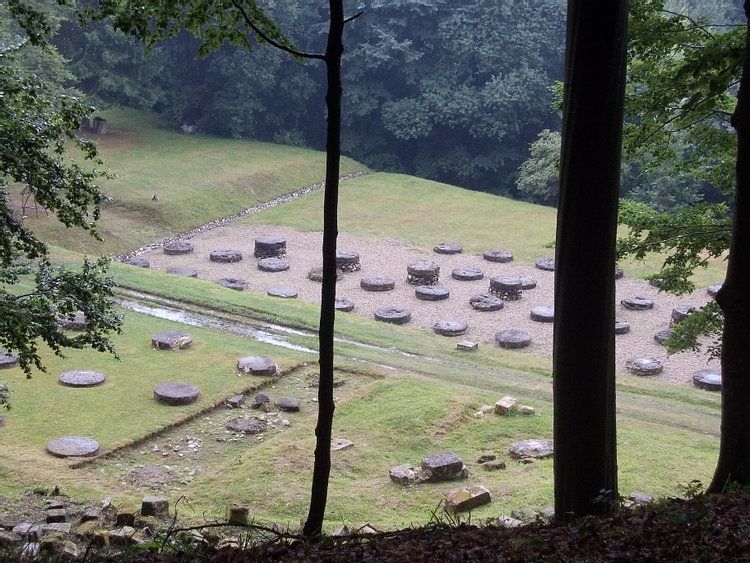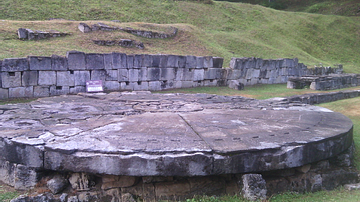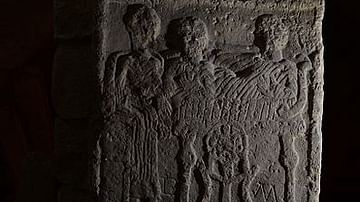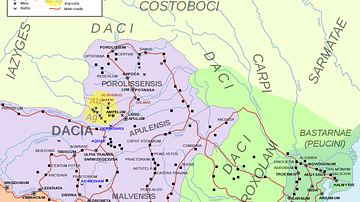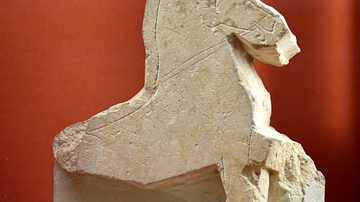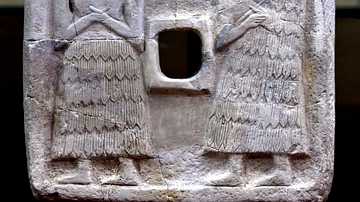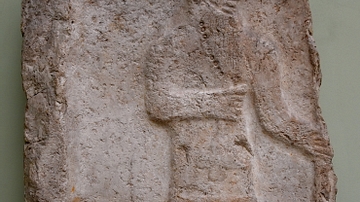Illustration
The large limestone sanctuary at Sarmizegetusa Regia was a religious building within the sacred area of the Dacian capital. It was build when Dacian king Burebista (82/61 – 44 BCE) moved his capital to Sarmizegetusa in 1st century BCE. The sanctuary served its purpose until the Roman conquest of Dacia in 106 BCE when it was destroyed.
The limestone sanctuary at Sarmizegetusa Regia is a good example of rectangular Dacian sanctuaries. It had rows of pillars made of stone or wood that were erected on stone bases which have survived to this day. Those pillars probably symbolized the trees of the sacred pine forest on which, according to Jordanes in his work "The Origin and Deeds of the Goths", the Dacians used to hang sacrifices dedicated to their god of war.
About the Author
Cite This Work
APA Style
Zivojin, A. (2019, December 02). Limestone Sanctuary, Sarmizegetusa Regia. World History Encyclopedia. Retrieved from https://www.worldhistory.org/image/11548/limestone-sanctuary-sarmizegetusa-regia/
Chicago Style
Zivojin, Andrej. "Limestone Sanctuary, Sarmizegetusa Regia." World History Encyclopedia. Last modified December 02, 2019. https://www.worldhistory.org/image/11548/limestone-sanctuary-sarmizegetusa-regia/.
MLA Style
Zivojin, Andrej. "Limestone Sanctuary, Sarmizegetusa Regia." World History Encyclopedia. World History Encyclopedia, 02 Dec 2019, https://www.worldhistory.org/image/11548/limestone-sanctuary-sarmizegetusa-regia/. Web. 03 Jul 2025.

